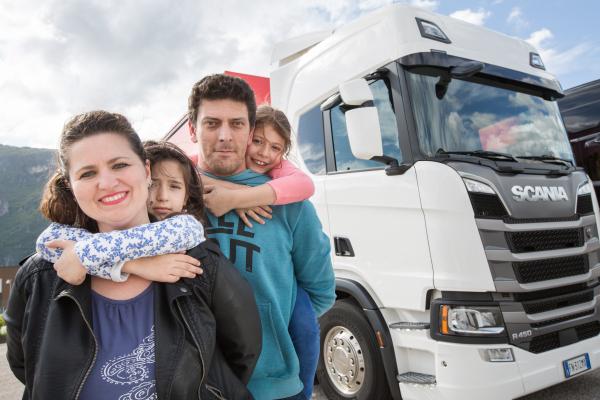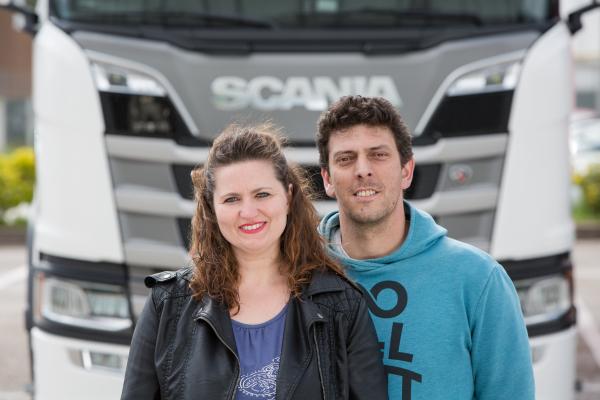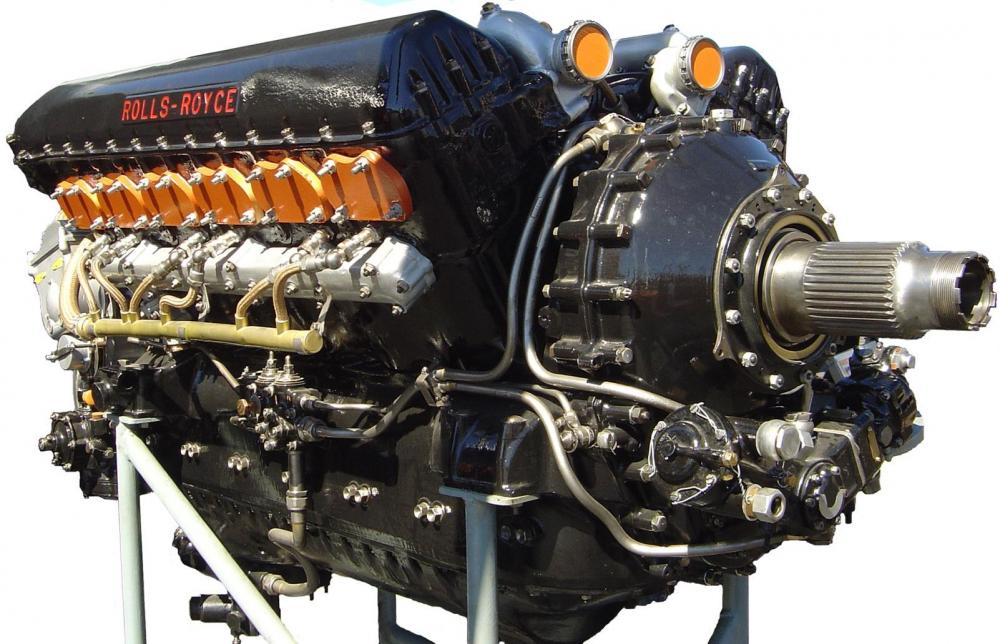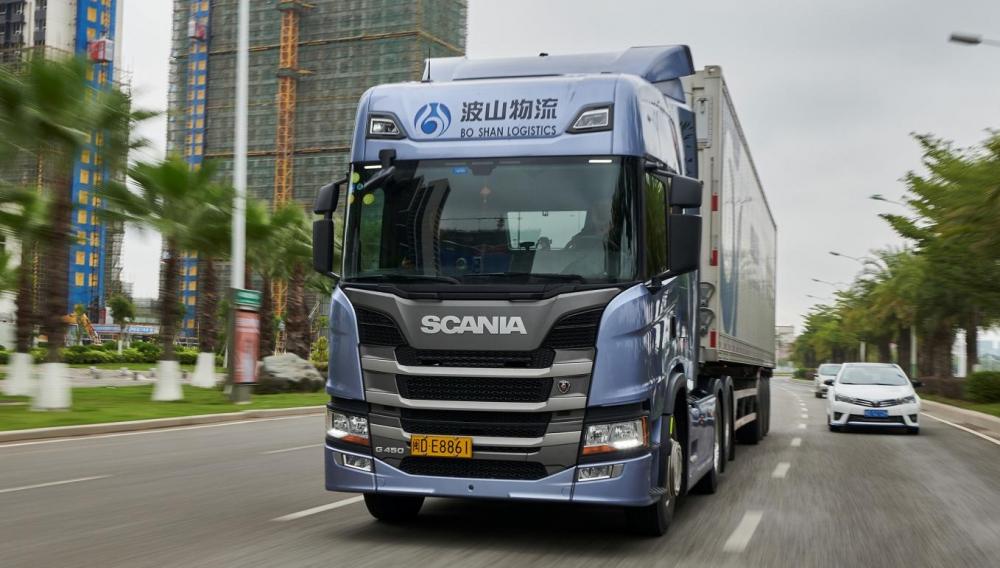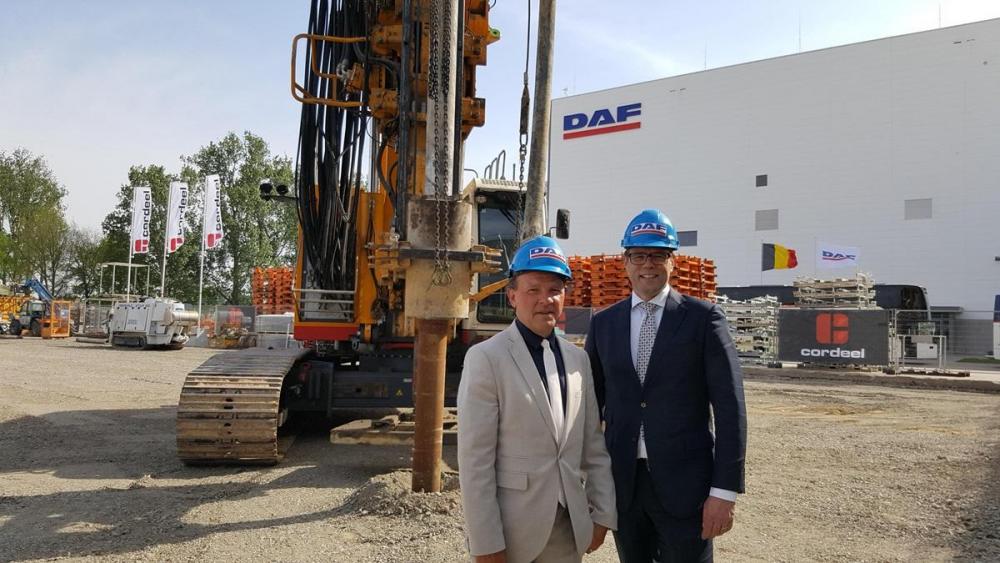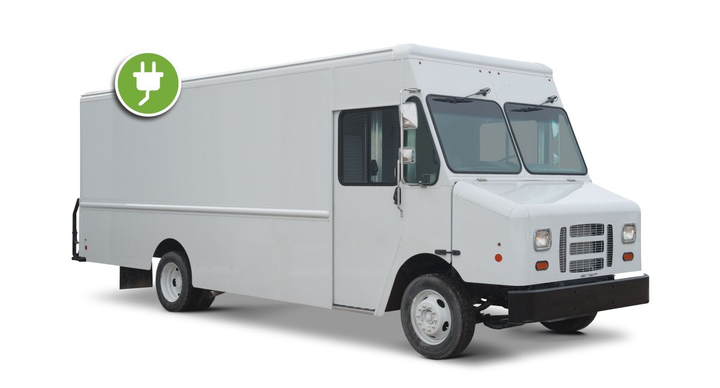
kscarbel2
Moderator-
Posts
18,855 -
Joined
-
Days Won
114
Content Type
Profiles
Forums
Gallery
Events
Blogs
BMT Wiki
Collections
Store
Everything posted by kscarbel2
-
It's anyone's guess. Venture capital firm GVW Capital's niche with it's Autocar, LLC project has been principally refuse, so hence we can expect a vocational conventional (bonneted) truck which can inherently be sold to tipper and ready-mix fleets as well. Obviously times have changed.......it will have to be substantially lighter than the Autocars of old in order to compete in the modern world. Interestingly, it will likely feature the superb X12. My point? Paccar foolishly didn't sign a purchase agreement with Cummins for the X12. So all those Paccar fleets which bought ISX12s are now being forced to buy the Paccar MX13, or switch brands. Absolutely stupid on Paccar's part.....give the customer an engine choice. Aside from Autocar, only Daimler's gaudy/tacky Western Star 4700 and (cheap) 114SD are available with the outstanding X12. Navistar and Mack don't offer it. So I say the X12, a high-performing low weight package, will give the new Autocar conventional a nice sales advantage right out of the gate.
-
Scania Group Press Release / April 30, 2019 Husband and wife Alberto Fontanari and Eva Del Marco have a shared passion for driving. So much so, they have both qualified for the Italian Scania Driver Competition finals, with Eva becoming the only woman in Italy to reach the deciding stages. Perhaps it’s unsurprising that Alberto and Eva have both qualified because their relationship is based on mutual support and a shared passion for driving. The couple grew up together, have had a relationship for more than 20 years, and finally got married six months ago. They live with their young daughters Silvia and Giorgia in the village of Pergine Valsugana in northern Italy’s Trento Province, where the couple operate a haulage company that bears Eva’s name. It was actually Eva who had the idea of taking part in the Scania Driver Competition. “I was confident of Alberto’s skills but he never wanted to enter previous editions. This year I decided to register him at any cost but he only agreed if I also enrolled. We never thought we would both qualify but here we are.” Thirty-eight-year-old Eva says that her passion for driving was kindled when she was still a child. “Thanks to our relationship, that passion developed and it became our profession,” she says. Alberto, 42, has always encouraged Eva to devote herself to her driving. “He encouraged me to obtain all the necessary licenses and then obtain the certificate that allowed us to start our business in 2005,” Eva explains. Alberto on the other hand was born into the business. His father owned a transport company but closed the business before his son was in a position to take over. Initially, Alberto worked as a driver before founding Delmarco Trasporti with Eva. They started with an old small pick-up truck before buying their first Scania. The next three trucks were also Scania and the fleet has since grown to seven vehicles. “We almost exclusively operate in Italy, including the islands. At the moment, we don’t operate abroad because there’s such intense competition,” says Eva. These days, Alberto is often still out on the road, but Eva mainly focuses on managing the company in order to care for their daughters. “Before our girls were born, we travelled together as a couple and on longer journeys we took turns driving,” she says. “Later, when one of our drivers quit, I started driving myself for two years. I would take assignments during the day to carry out administrative work during the evenings.” As the only woman to qualify for the Italian finals, Eva Del Marco is happy to say that her gender has never been an issue for her in the world of haulage. “I’ve never encountered any problems being a female driver; no prejudice. This profession offers you the opportunity to meet new people, see new places and broaden your horizons.” “The chance to practise a job you like is the most beautiful thing in the world. As tiring and demanding as it is, it is welcome, since every day and every journey brings great satisfaction.” And what if Giorgia (9) and Silvia (7) wanted to become long-haulage drivers? “If our girls also develop a passion for driving and one day wish to pursue this career, we will happily encourage them,” says Eva, smiling. .
-
https://d3w5dxa1iffln.cloudfront.net/media/1394/2019-real-steel-john-noons-fleet-wot-jf19.pdf
-
Go aftermarket. Assuming that RVI number is correct, call a large aftermarket distributor in Europe. Google 5000447543. eg. https://www.eurorecambio.com/industrial/Disco-de-freno-Renault-5000447543_7916053_gp
-
Ford Trucks International / April 29, 2019 The Ford Trucks International corporate website has received a Gold Award in the Web Elements category. In addition, the Ford Trucks F-MAX microsite has been honored with a platinum award in the Mobile and Web Based Technologies category. .
-
A mild recession in 3rd qtr 2019 A more significant recession by 2023.
-
-
Ford plans several initiatives to boost customer experience Michael Martinez, Automotive News / April 2, 2019 DETROIT — Ford Motor Co. credits a deep understanding of truck customers for the sales success of its F-series line of pickups. Now the automaker wants to apply that same buyer-centric approach to the overall vehicle purchase process. Ford on Thursday announced a series of initiatives designed to improve the customer experience. They include a new loyalty rewards program; redesigned call centers; and pilot programs for a mobile service network, easier lease renewal and new types of showrooms. Although officials wouldn't disclose details, they said Ford is doubling the amount of money it spends on customer experience in an effort to improve its standing among rivals such as Toyota. "We're sort of middle of the pack," said Elena Ford, the automaker's chief customer experience officer and great-great-granddaughter of founder Henry Ford. "We want to grow to be best in class. If we truly want to be serious about customer experience, we have to resource it like we do F-150." The automaker late last year announced intentions to focus more on customer loyalty and retention instead of conquesting buyers from other brands, which they say is harder. Customer experience is at the heart of retention, Ford said, and the company looked to non-automotive companies such as Apple, Google, Marriott and JetBlue for best practices they could emulate. "When experiences are good, we're rewarded with higher loyalty," Ford said. FordPass Rewards The automaker last month launched a new loyalty rewards program, called FordPass Rewards, to try to boost dealers' service business and stop customers from defecting to their local Jiffy Lube or third-party repair shop. Nearly every U.S. dealer has signed up to offer the program, which runs through the company's FordPass smartphone app. Customers who buy or lease a new vehicle and enroll in the free program automatically earn 42,000 points, which is enough to cover their first three oil and air filter changes. Customers will earn points for any service visit and can bank points toward service costs or the purchase of a new vehicle. The points can be redeemed at any dealership. Ford modeled the program on Delta's popular SkyMiles rewards program. The program does not cost dealers. Ford pays for all of the points. Officials said they are looking at ways to expand opportunities for customers to earn points with more than just vehicle maintenance, which might occur only once every handful of months. Mobile Service Vans Ford has begun piloting a mobile service van concept at five dealerships across five states to better serve customers. The vans contain equipment for oil changes, brake pad installation and parts to fix recalls. Dealers must purchase and outfit the vans, and it's up to individual retailers how much they would charge for the service, Ford said. The pilot currently runs in California and will expand this month to Texas, Illinois, New Jersey and Florida. It is unclear how long the pilot will last or whether Ford will expand it. The automaker currently operates 100 mobile service vans for fleet vehicles in the U.K. New showroom concepts Ford is also experimenting with a series of new showroom concepts. The first involves upgrades to the traditional showroom with what's called the Ford Signature look. It involves a more customer-centric experience modeled off Apple stores. The stores call for replacing traditional deal desks with purchase rooms that have shared screens; monitors with service prices and video feeds of the service garage; and "celebration areas" for new-vehicle delivery that includes pulling a silk off a customer's new car, like at an auto show. Ford said it has 70 Ford Signature stores around the world with plans to grow to 300 globally by year's end. The automaker is also piloting a concept called Ford Smart Labs, an open floorplan look that's dropped into high-traffic retail areas, such as shopping malls. The first is opening in Brussels, Belgium, and Ford plans to add five more labs by the end of 2019, including one in Germany and another in Canada. Lease pilots Ford Credit is offering customers a couple of new experiences to make the leasing process smoother. One is a "personal lease assistant" who can walk customers through any questions as early as four months before a lease is up. The pilot is currently running in New York and Philadelphia. Another pilot called "Drive New. Now" provides lease customers with a one-click option to renew their lease by offering them a similar vehicle that's available now at their individual dealership. For example, someone in a 2016 Ford Edge would be offered a 2019 Edge with the same trim package. Call centers Ford this month will open a new 500-person call center in Houston with agents that specialize in pickup issues. The call center will be a prototype for a new style globally, Ford said, that places greater emphasis on customer needs. Instead of being transferred, a customer will now stay with the first person reached when the call is made. That first person will remain with the customer through the experience -- an idea Ford took from call centers at its Lincoln luxury brand. "Everything we're doing is to empower customers and make their complicated lives simpler and worry-free," Elena Ford said.
-
Ford to scale back V-8 engine output at Ontario plant Automotive News / May 2, 2019 WINDSOR, Ontario — Ford Motor Co. is dropping one of three production shifts at its Essex engine plant in Windsor, Ontario, in October because of waning demand for 5.0-liter V-8 engines in the automaker’s F-series trucks. The move was made “to better align with consumer demand,” a Ford Canada spokesman said. John D'Agnolo, president of Unifor Local 200, which represents workers at the plant, said elimination of the third shift is the result of Ford offering a growing number of engine sizes. F-series truck buyers can choose among 2.7-, 3.3-, 3.5- and 5.0-liter engines — as well as a diesel variant — and many are opting for smaller engines, D’Agnolo said. Ford Canada said “there will be no [job] cuts” as a result of the changes. “All employees affected by the shift reduction will have the opportunity to move to Windsor Engine Plant Annex to support 7.3-litre engine production,” Ford Canada spokesman Matthew Drennan-Scace wrote in an email. The annex building is part of the Windsor engine plant, which is a 15-minute drive from the Essex engine plant. Two new production shifts are to begin at the annex in November, D’Agnolo said. D’Agnolo said he wasn’t surprised by the news and workers were prepared. “We’ve had down shifts every week since January, and we have two down weeks in the summer, and two more down weeks scheduled in September,” D’Agnolo said. “We could see that sales of the 5.0-liter were dropping.”
-
Allison Unveils E-Axle Propulsion for Heavy-Duty Trucks
kscarbel2 replied to kscarbel2's topic in Trucking News
Peterbilt tests Allison e-axle in Class 8 truck Transport Engineer / April 30, 2019 US truck manufacturer Peterbilt is testing a new axle for electric vehicles, supplied by Allison Transmission. The AXE Series electric powertrain is being fitted to Peterbilt’s Model 579EV electric Class 8 truck, which delivers 1,455bhp (1,100kW). “Allison is pleased to be building upon its legacy of innovation and believes this product will be a significant step in taking the industry to the next level of electrification,” said David S Graziosi, president and CEO of Allison Transmission. “We value this opportunity to work with an industry leader.” A fully integrated electric powertrain system designed to fit inside a standard frame along the axles of commercial trucks, the AXE Series features electric motors, a two-speed gearbox, oil coolers and pumps. The offering also includes power electronics for a complete powertrain solution. -
Commercial Motor / May 1, 2019 Black Lion limited edition truck roars into the commercial vehicles show. .
-
FCA seeks $160 million in tax incentives for Detroit plants Automotive News / April 30, 2019 Fiat Chrysler Automobiles is seeking up to $160 million in taxpayer incentives to partially subsidize a planned $2.5 billion investment in two Detroit assembly plants. The package of taxpayer incentives, grants and breaks would come from an Industrial Property Tax Abatement, the Good Jobs for Michigan program, a State Essential Services Assessment Exemption and a Michigan Business Development Program grant from the Michigan Strategic Fund, according to documents submitted this week to the Detroit City Council. FCA's plans to spend $1.6 billion converting its Mack Avenue engine plants into a Jeep assembly plant and $900 million retooling and modernizing the company's nearby Jefferson North Assembly Plant will add 4,950 jobs and is expected to result in a "gross fiscal benefit" of $300 million, according to the Detroit Economic Growth Corp. "FCA confirms that it has applied for up to $160 million from existing state incentive programs as related to its proposed development at the Mack Avenue Engine Complex and Jefferson North Assembly Plant," an FCA spokeswoman said Tuesday. "As these incentives have yet to be approved and negotiations are still pending, we cannot comment further." If approved by state economic development officials, the tax incentives would amount to 6.4 percent of the automaker's total investment at the two east side Detroit plants. By comparison, Ford Motor Co. received $239 million in tax incentives over 30 years for a planned $740 million autonomous vehicle campus in Detroit's Corktown neighborhood, anchored by the long-vacant Michigan Central Station train depot. If that ambitious project comes to fruition, Ford's incentives will amount to 32.3 percent of its investment. The disclosure of FCA's potential tax incentives comes three days after the city's self-imposed deadline to assemble 200 acres for FCA's plant expansion, which could add millions of dollars to the value of the subsidies for the automaker to expand its manufacturing footprint in the Motor City. The potential tax incentives for Fiat Chrysler would need approval by the Michigan Strategic Fund's board. A spokesman for the Michigan Economic Development Corp. would not confirm the $160 million figure. "At this time, FCA and the MEDC are still finalizing the incentive package that will go before the MSF board," MEDC spokesman Otie McKinley said in an email. " As is always our process the MEDC does not share project details until time of MSF board approval." No date has been set for the MSF board to consider tax incentives for the automaker, McKinley said. Detroit Mayor Mike Duggan's administration has committed to building a wall along the the new property line with abutting homes on Beniteau Street as part of a $17.4 million contribution to a community benefits agreement that is pending before City Council. John Roach, spokesman for Duggan, said the mayor's office was "making significant progress" on the land deals and there will be "an announcement when everything is done." Detroit's efforts to assemble public and private land around the two FCA plants is said to be a complicated matter involving a series of land swaps to lower the city's out-of-pocket costs. DTE Energy Co., the Great Lakes Water Authority and Hantz Farms have already publicly agreed to land deals with the city. City Council approved those land swaps Tuesday on a 7-2 vote, The Detroit News reported. One of the biggest landowners with which Duggan's team has been negotiating is Crown Enterprises, the real estate development arm of billionaire trucking mogul Manuel "Matty" Moroun's family business. The Morouns own an 80-acre paved parking lot that they lease to FCA for finished vehicle storage. It's the site of the former Budd Wheel plant, which Crown Enterprises demolished in 2017 to build a logistics and vehicle shipping center for FCA. On Friday, the Michigan Department of Environment, Great Lakes and Energy's Air Quality Division approved FCA's air pollution-control permit for expansion of the Mack Avenue plant.
-
Ford Trucks International / April 30, 2019 Ford Trucks is your most trusted partner in public service! Our water tanker trucks range in tank size from 8,000 to 18,000 L, giving you everything you need to get the job done. . 1507940147251-drlcss.mp4
-
The new Liebherr LTM1230-5.1. Powered by a Liebherr engine....of course. .
-
Volvo Trucks Press Release / April 30, 2019 Volvo Collision Warning with Advanced Emergency Brake – AEBS –is an active safety system designed to support the driver, to reduce or mitigate the effect of an incident with another vehicle, travelling in the same direction. Designed as a driver training aid this short film highlights how this important active safety system can support the driver in emergency situations, from how the system works, daily checks and warnings through to what the system can and can’t do on the road. It is a safety and not a comfort system, so hopefully you never have to use it. Drive safely. .
-
-
Volvo Group Press Release / April 24, 2019 “The Volvo Group’s positive development continued in Q1 2019. We increased net sales to SEK 107.2 billion (89.1), with all business segments and regions contributing. Both our vehicle and service business grew at a good pace. The increased sales volumes together with an improvement in our operational performance contributed to a rise in profitability. Our adjusted operating income increased by 53% to SEK 12.7 billion with all business segments contributing with higher earnings. The adjusted operating margin rose to 11.8%,” says Martin Lundstedt, President and CEO. .
-
Scania Group Press Release / April 29, 2019 Xiamen Boshan Food Co has turned to Scania trucks for transporting time-sensitive frozen foods. Mingyi Ke is the young warehouse and logistics manager of Xiamen Boshan Food Co in China. After management studies abroad and the arrival of Scania’s new truck generation, Ke developed a new solution for the family company’s cold chain logistics business. In 2003, Mingyi Ke’s father founded Xiamen Boshan Food Co., Ltd. Three years ago, Ke returned from his studies abroad and began taking over management of the company’s truck fleet. Soon he started developing the warehousing logistics and fleet management. In June 2018, Ke attended the launch of the new Scania truck generation at Xiamen, and purchased four PGR series and five new generation Scania G450 6X2 trucks. High demands Boshan Food’s business includes frozen food, aquatic products, frozen meat storage, cold chain logistics and trade. Reliable transportation that ensures timely deliveries is crucial to a successful business, especially with refrigerated foodstuffs that could go to waste if there are significant delays. “Cold chain transportation has high demands for the performance and stability of vehicle equipment. Using other brands or second-hand equipment can result in high failure rates and high maintenance costs, which will prevent us from meeting the customers’ transportation needs,” says Mingyi Ke. Despite the fierce market competition on freight rates, Boshan Food’s good reputation in the industry means that it usually has a relatively stable freight rate. Fuel economy biggest advantage The company’s main transportation routes are from Xiamen to Zhejiang, Shanghai, Jiangsu and Yungui – the longest route is 1,250 kilometres and takes 15 hours. “The overall advantage of the new Scania trucks is significant. While fuel occupies a large part of the total cost, Scania’s fuel economy is the biggest advantage,” says Mingyi Ke. “A domestic vehicle has an average fuel consumption of 40 litres per 100 kilometres, which is about 10 litres more than Scania, and its annual maintenance costs are as high as 700,000 to 800,000 renminbi (Chinese yuan).” Mingyi Ke also has clear data for comparing Scania’s two product generations: in the Yunnan-Guizhou region, Scania’s PGR series has an average fuel consumption of 30 litres per 100 kilometres, and the new generation Scania has 28 litres; in Zhejiang and Shanghai, the performance of the PGR series is 28 litres while the new generation Scania is between 25 and 26 litres. “The cost savings alone are already appealing to truck owners,” Mingyi Ke explains. Excellence in fleet management Mingyi Ke strives for excellence when it comes to fleet management. Each vehicle in his fleet is equipped with seven cameras and uses third-party services to keep the driver and cargo safe at all times. Ke checks his mobile phone frequently to track the driving status of each vehicle and for any signs of driver fatigue, promptly reminding the driver to change shift. Ke’s approach to driver health is paying off. China’s logistics industry has a high turnover of drivers, but this does not apply for those that drive for Boshan Food. There, they all hope to drive the Scania vehicles and soon Mingyi Ke will develop a driver assessment system to further enhance the safety awareness and fuel-saving skills of his drivers. A healthy supply chain Speaking of future development, Mingyi Ke says his plan is to buy 10 new Scania trucks every year. “Frozen food transportation has high demands for temperature and time efficiency, so the equipment investment and fleet management costs in the early stages will be relatively high. Using top-notch equipment to ensure safe and efficient transportation will win the trust of customers and maintain better freight rates and help form a healthy supply chain.” With the help of Scania trucks and a proactive managerial approach, Mingyi Ke, a young and promising talent, is looking to the future of the family company with great confidence. .
-
Renault Trucks Press Release / April 29, 2019 1894 - 2019 🕰 We celebrate our 125 years of history 🎉 1️⃣8️⃣9️⃣4️⃣: everything starts with a brilliant idea from Marius Berliet 💡 Discover the EP1: "INVENTION OF THE FIRST ENGINE" 👀 .
-
IVECO Press Release / April 29, 2019 In anticipating requirements for cleaner air and low-carbon mobility by introducing a newly designed CNG-powered Crossway coach, IVECO BUS is providing the right vehicle for sustainable regional transport. .
-
DAF Trucks Press Release / April 23, 2019 DAF is to invest EUR 200 million in its cab plant in Westerlo, Belgium in order to be prepared for future production volumes as DAF further expands its success worldwide. DAF made the announcement today during a visit by Philippe Muyters, the Flemish Minister for Work, Economics, Innovation. DAF opened its Westerlo plant in 1966, where - in addition to cabs - it has also manufactured its own axles since the early seventies. The current workforce of 2,800 employees produces axles and cabs for the heavy and medium duty trucks that come off the production lines in Eindhoven, The Netherlands and in Leyland, United Kingdom. Leading position Thanks to its excellent trucks, first class services and a highly professional dealer network, DAF has become the second largest truck brand in Europe and the market leader in the important tractor segment. To further strengthen its leading position in Europe as well as in international markets beyond, DAF is creating completely new state of the art processes at the Westerlo plant. With the EUR 200 million investment, production capacity of the cab plant increases by some 45% to 300 cabs per day in a 2-shift operation. This number will be in line with capacity of the new Cab Paint Factory, which was officially opened at the end of 2017, following an investment of EUR 100 million. State-of-the-art Body-in-white process For the ‘body-in-white’ assembly of the DAF CF and XF cabs, the existing 17,800 m2 Cab Body Welding factory will be expanded by 13,200 m2. The extension will feature a single-line lay-out with some 130 highly advanced robots and 135 fully automated welding guns, to provide world-class quality, efficiency and ergonomics. Cab Trimming leading the way in ergonomics The Cab Trimming plant (15,600 m2) will be expanded by 20,000 m2. The new facility will have multiple sections, including a main assembly line, a roof assembly line and door and cockpit sub-assembly lines. It will also include a highly advanced test and inspection department. In the main assembly line an advanced ‘skillet’-system will be applied for class-leading ergonomics, enabling employees to adapt working height to suit operations and individual preferences. ‘Investment for the future' DAF president, Harry Wolters: "The new state-of-the-art cab body and cab trimming factories are required for DAF to further grow both inside and outside Europe. Upon completion, the new facilities will be the most modern of their kind, setting the benchmark in quality, efficiency and ergonomics. Above all, the investment of EUR 200 million once again illustrates DAF’s confidence in the future of its plant in Belgium.” ‘A textbook case of innovation, talent and passion’ Flemish minister for Work, the Economy and Innovation Philippe Muyters: “In our rapidly changing economy, companies that want to excel have no choice but to be innovative. But keeping our skills up-to-date and relevant is also key. DAF obviously has what it takes: a vision on sustainability, innovation and growth, combined with the commitment to transform not only their processes, but also their employees’ skills. I am proud to contribute to this textbook case of innovation, talent and passion.” Construction of the new Body and Cab Trimming factories at the DAF Vlaanderen site has started. The Belgian construction company Cordeel has been contracted to realize the buildings, including new offices, meeting rooms and facilities for the employees. The body-in-white welding line will be supplied by VDL Steelweld from The Netherlands. .
-
Lightning Systems launches electric powertrain for Chevy 6500XD
kscarbel2 replied to kscarbel2's topic in Trucking News
Lightning Debuts All-Electric Ford Delivery Van Heavy Duty Trucking (HDT) / April 30, 2019 Lightning Systems, developer of zero-emission drivetrains for commercial fleets, debuted new battery-electric powertrain options for the Ford F-59 stripped chassis to support customers with delivery fleets and food trucks. The new Lightning Electric powertrain for the Ford F-59 chassis is available for F-59 variants, which range from 16,000 to 22,000-pound gross vehicle weight rating (GVWR) configurations. Lightning has already received orders for early production units, and deliveries will begin this summer. This is the fifth powertrain available in the Lightning product line. "We now offer the broadest range of electric powertrain products in the industry, with high-quality zero-emission powertrains available for commercial and government fleets on Class 3 through 7 Ford, GM, and city bus platforms that are readily available and supported by a large number of service partners, upfitters, and accessory lines," said Tim Reeser, CEO of Lightning Systems. The new Lightning Electric Ford F-59 will offer peak power of 180 kilowatts (241 hp) with 790 lb.-ft. of torque. It includes a five-year, 60,000-mile warranty on the powertrain with maintenance performed by trained local dealers. Vehicle vouchers and incentives are available in many states. The Lightning F-59 offers two range variants — either 80 or 110 miles — with lithium-ion batteries rated at 96 kWh or 128 kWh. The battery system will accommodate a full charge in under two hours for 80 miles of range and a little more than 2 hours for the 110-mile range version with DC Fast Charging. The powertrain supports full regenerative braking, with industry-leading efficiency that adds range while reducing wear and tear on the friction brakes. The vehicle comes with Lightning Analytics, an electric powertrain telematics-analytics system that provides detailed reporting on vehicle efficiency and operating metrics. Lightning Electric is available for the Ford F-59 as part of Ford's eQVM (advanced fuel Qualified Vehicle Modifiers) program. Ford's vehicle warranty covers the base chassis for vehicles with the Lightning drivetrain. Ford QVM participants perform installations and service. Last year, Lightning Systems began deliveries of the Lightning Electric upfit for the heavy-duty Ford Transit, which is also covered by Ford’s eQVM program. .
BigMackTrucks.com
BigMackTrucks.com is a support forum for antique, classic and modern Mack Trucks! The forum is owned and maintained by Watt's Truck Center, Inc. an independent, full service Mack dealer. The forums are not affiliated with Mack Trucks, Inc.
Our Vendors and Advertisers
Thank you for your support!




